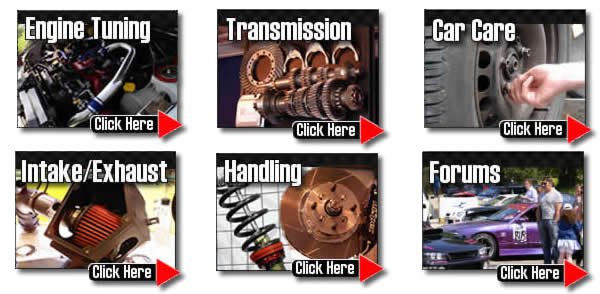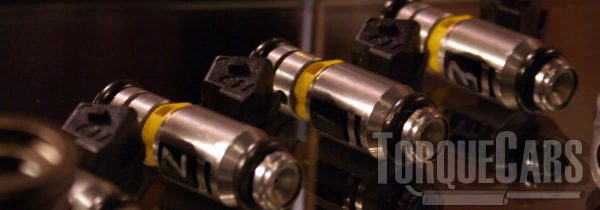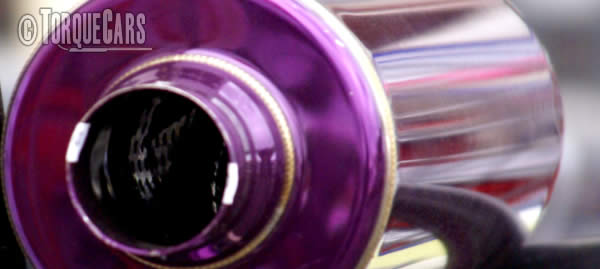Tuning the Ford Fusion
"Thanks for reading this Ford Fusion tuning article."
The Fusion is a great tuning project to execute. With the right mods your Fusion can be transformed into a fun car. Don't waste money, do your homework and follow our unbiased guides to each performance upgrade to avoid wasting money.
The Ford Fusion are fantastic to work on and with carefully picked uprated parts like a remap, turbo improvements and camshafts you will noticeably increase your driving pleasure.
We shall look into Fusion tuning and highlight the best upgrades.

Handling/Suspension upgrades
Improving the handling for many tuners first priority in your Fusion tuning project.
If you set the toe out to 0.9 to 1.5 degrees on the front, and add slight negative camber then cornering will radically be enhanced.
We suggest that you fit motorsport suspension and lower the car by 30mm - 43 mm. Larger drops require arch work - especially on models already equipped with performance suspension.
Fitting better brake discs and better high performance brake pads will make for greatly enhanced stopping.
Please note that race brake pads can be noisier and will have to be hot before they are effective.
On your regular commute to work the brakes are occasionally used and will not be effective so source brake pads which don't need to be really hot.
Turning our attention to the Fusion's engine we need to get a bit more power out of the top end.
Sadly with smaller engine sizes you are wasting your time spending money on modifications, so if this applies to you get yourself an engine swap then apply the following mods.
Engine tuning mods.
The following performance kits are usually fitted by our members, decide how far you want to push your car before you begin.
Getting the correct grade of motorsport upgrades for your planned usage of the car is vital. Stage 3 motor sport mods just won't work well on the road difficult in stop start traffic.
Please watch our introduction Video tutorial to car tuning. Be sure to subscribe and support our new channel.
How to tune your car
- Improve the handling
Focus on Suspension improvements, such as coilovers and make sure the bushings are in good order and that the alignment is correct. Then focus on improving the brakes, with a big disk brake conversion kit and fast road brake pads.
- Remove restrictions
Focus on the intake and exhaust with filters being the common point of restriction in a tuned car. Intercoolers may also become restrictive on turbo engines so this may also need to be uprated.
- Burn more fuel & air
Increase the fuelling so it matches the air coming into the engine. The ratio is important so you need to improve the fuel pump and injectors, so the head mods, big valve conversions, fast road camshafts and forced induction upgrades extra supply of air is adequately met.
- Test and replace any weak parts
Weak areas are commonly the clutch, the turbocharger and pistons and crankshaft in a highly tuned engine. Makes sure these components will cope with your power aspirations.
- The Tune or Remap
A cars ECU controls the fuel, timing, spark and even the turbo in some cases, so to fully extract your gains you should remap the car last and this will fully release the power. Some cars are easy to map, and others require piggyback ECU's or aftermarket ECU's but this is the most vital step of your tuning project.
Modifying to Stage 1:
Sports exhaust, Suspension upgrade (drop 30mm - 43 mm.), Alloy wheels, Panel air filter, Lighter flywheel, Remap.
Modifying to Stage 2:
Ported and polished head, Fast road cam, high flow fuel injector, Power/Sport clutch, fuel pump upgrades.
Modifying to Stage 3:
Sports gearbox, Engine balancing, Competition cam, Internal engine upgrades (pistons/head/valves), Adding or upgrading forced induction (turbo/supercharger).
Your targets when tuning should be a flat and wide torque output. You want to avoid sending all the torque to be at the top end unless you are creating a motor sport car.
The whole aim of our advice is to give a limited introduction of modifying performance parts and point you in the right direction, our forum is the place to go for detailed advice and tips on your customized car project, the best uprated modifications and all aspects of modding cars.One of the most cost effective mechanical mods you can do on your NASP engine is to fit a fast road camshaft .
The exhaust and intake flow play a big role in your cars power band, but be careful here, getting this wrong can upset the idle and make the car challenging to drive in traffic. You'd need to follow a cam upgrade with other mods and finish with a performance chip for the best performance gains.
Don't forget to look at the fuelling when you are increasing the power - it makes the car more thirsty.
If you find you experience flat spots and power surges after your tuning parts you should check the fuelling and try a higher octane fuel as well.  Uprated injectors will enable you to supply sufficient fuel to the engine.
Uprated injectors will enable you to supply sufficient fuel to the engine.
A fuel pump will only deliver a finite amount of fuel, so you may need to uprate this if your injectors are demanding more fuel.
Intake and Exhaust Tuning.
Now we move on to the intake and exhaust and ensure proper flow through the engine.  Air induction kits are only beneficial to add performance if your cars air intake is struggling! Adding an induction kit to most small engines will see NONE OF A LOW END POWER GAIN AT ALL. If you have heavily modified your engine and it's need for air INCREASES DRAMATICALLY then an induction kit is the answer and will help remove this restriction.
Air induction kits are only beneficial to add performance if your cars air intake is struggling! Adding an induction kit to most small engines will see NONE OF A LOW END POWER GAIN AT ALL. If you have heavily modified your engine and it's need for air INCREASES DRAMATICALLY then an induction kit is the answer and will help remove this restriction.

Maximum power gains come from a full induction kit with a cold air feed on heavily tuned engines, this can be sited within an air box but a panel filter should suffice for most applications. TorqueCars suggest you use a panel air filter as these are easy to clean and maintain and generally perform better than paper ones.
Do not go with the biggest exhaust you can find this will slow the exhaust rate - the best for power gains are usually between 1.5 to 2.5 inches. It is the shape and material more than the bore size.
Getting a professionally ported and polished head with larger valves can fully release the engines power. Your clutch can slip as the power goes up if it starts to fail and the standard clutches are only ever good for power gains of up to 43%. Fit an uprated clutch to avoid power losses through the transmission. The best mods in our experience for your Fusion are fast road camshaft, remap, induction and exhaust, suspension.
NASP engines do not achieve big power gains if you remap them, unless you have done extensive modifications. With turbocharged engines this is another story. A remapped turbo will give big power gains and fully release the potential power of the engine. Despite the large cost involved adding forced induction to a NASP engine will give large power gains. It is generally cheaper to bolt on a supercharger than it is to bolt on a turbo. Turbos provide boost in increasing proportion to th engine speed and this can make mapping difficult.
It is more straightforward to map a supercharger because the boost is correlating to engine speed on a linear curve. Alternatively you could fit water injection to minimise knock.
Alloy wheel upgrades.
The benefits of alloy wheels include reducing your unsprung weight and better brake cooling. Pay attention to your choice of tyres (tires) for your car, a good soft compound tire can really enhance your cars handling. Please note although they can look cool on the Fusion large alloys will actually decrease your performance. The larger you go the lower your acceleration will be - this to the change in your effective final drive ratio.
Due to this fact we would advise sticking to a maximum wheel size of 19 inches on the US versions, and we prefer the handling on the 18's although we know some of our members have with bigger wheels with no problems. The older Fusions and European models can only really cope with a max of 17 inches.
- 17-Inch 225-50-17 & 235-50-17
- 18-Inch 235-45-18
- 19-Inch 235-40-19
For more information on Tuning your car please join us in our friendly forum where you can discuss Fusion options in more detail with our Fusion owners. It would also be worth reading our unbiased Ford tuning articles to get a full grasp of the benefits and drawbacks of each modification.
Please help us improve these tips by sending us your feedback in the comments box below.
We love to hear what our visitors have got up to and which mods work best for them on each model of car. Comments are used to improve the accuracy of these articles which are continually updated.
If you liked this page please share it with your friends, drop a link to it in your favourite forum or use the bookmarking options to save it to your social media profile.
Check out TorqueCars new YouTube channel, and see their awesome new content...
Feedback
Please use our forums if you wish to ask a tuning question, and please note we do not sell parts or services, we are just an online magazine.
Help us improve, leave a suggestion or tip
